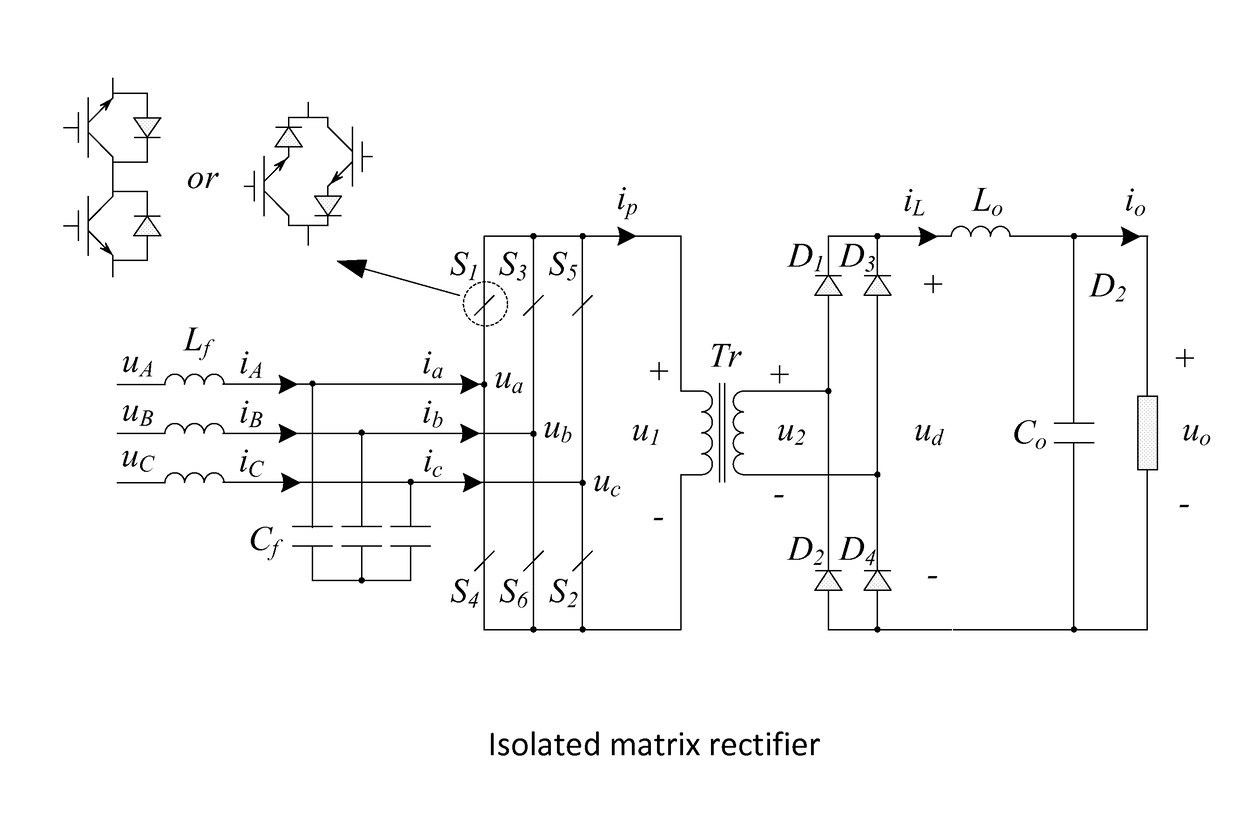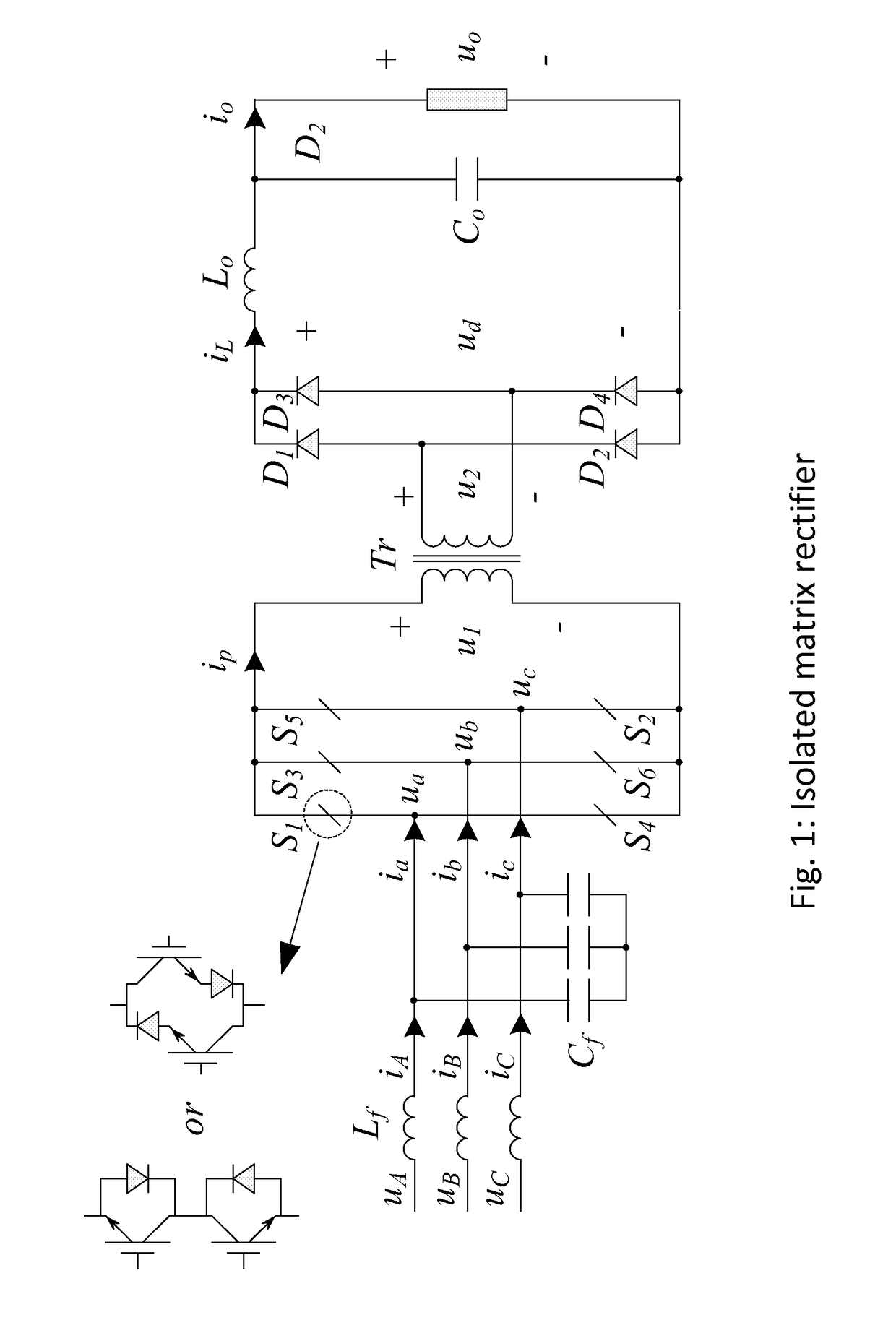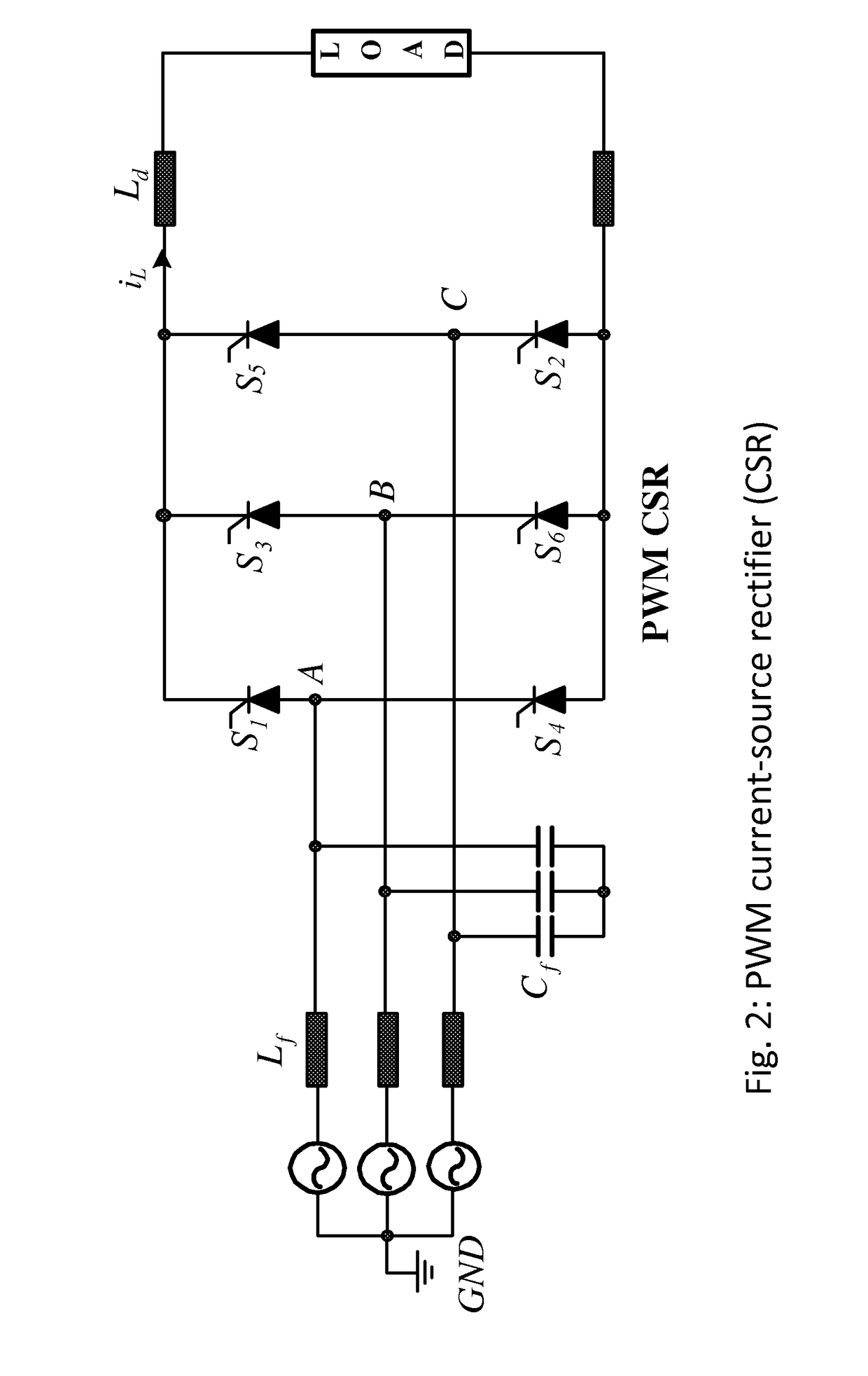Space vector modulation for matrix converter and current source converter
a technology of current source converter and space vector, which is applied in the field of space vector modulation (svm), can solve the problems of large thd, inability to provide infinite load-side inductance lsub>, and in practice, and achieve the effect of improving svm
- Summary
- Abstract
- Description
- Claims
- Application Information
AI Technical Summary
Benefits of technology
Problems solved by technology
Method used
Image
Examples
case 1
[0063] when the inductance Lo>∞ or the inductance Lo is so large that the current ripple can be ignored so that iL0=iL2=iL4=iL6−IL, then the dwell times are the same as the known SVM.
Tα=mTs sin(π / 6−θ) (22)
Tβ=mTs sin(π / 6+θ) (23)
T0=Ts−Tα−Tβ (24)
where the modulation index m is given by:
m=kIrefIL,(25)
and θ is the angle between the reference current {right arrow over (I)}ref and the α-axis as shown in FIG. 7.
[0064]In this case, the improved SVM according to various preferred embodiments of the present invention is consistent with the known SVM.
case 2
[0065] When the inductance Lo is very small or the load is very light, then the load-side can be in DCM mode. The dwell times are calculated as:
Tα=2kIrefLoTssin(π / 6-θ)u1α / k-uo(26)Tβ=2kLoIrefTssin(π / 6+θ)β1β / k-uo(27)T0=Ts-Tα-Tβ(28)
where k is the transformer turns ratio, Lo is the inductance of the load-side inductor L0, {right arrow over (I)}ref is the magnitude of the vector {right arrow over (I)}ref and is determined by the controller, Ts is the sampling period, θ is the angle between the reference current {right arrow over (I)}ref and the a-axis as shown in FIG. 7, u1α is measured by the controller and corresponds to a line-to-line voltage depending on the switching state, u1β is measured by the controller and corresponds to a line-to-line voltage depending on the switching state, and uo is the output voltage as measured by the controller. The line-to-line voltages u1α and u1β depend on the switching state. For example, in Sector I with active vectors {right arrow over (I)}1 and {r...
case 3
[0066] when in CCM operation and the current ripple cannot be ignored, then the dwell times are calculated as:
Tα=-B+B2+ACsin(π / 6-θ)A(29)Tβ=-B+B2+ACsin(π / 6-θ)A·sin(π / 6+θ)sin(π / 6-θ)(30)T0=Ts-Tα-Tβwhere(31)A=(4u1α / k-uo)+(4u1β / k-uo)sin(π / 6+θ)sin(π / 6-θ)(32)B=2nLoIL0-3uoTs / 2(33)C=2n2kLIrefTs(34)
where um is measured by the controller and corresponds to a line-to-line voltage depending on the switching state, u1β is measured by the controller and corresponds to a line-to-line voltage depending on the switching state, k is the transformer turns ratio, uo is the output voltage as measured by the controller, θ is the angle between the reference current {right arrow over (I)}ref and the α-axis as shown in FIG. 7, Lo is the inductance of the load-side inductor Lo, IL0 is the current through inductor Lo as measured by the controller at the beginning of the sampling period Ts, Ts is the sampling period, and Iref is the magnitude of the vector {right arrow over (I)}ref and is determined by the cont...
PUM
 Login to View More
Login to View More Abstract
Description
Claims
Application Information
 Login to View More
Login to View More - R&D
- Intellectual Property
- Life Sciences
- Materials
- Tech Scout
- Unparalleled Data Quality
- Higher Quality Content
- 60% Fewer Hallucinations
Browse by: Latest US Patents, China's latest patents, Technical Efficacy Thesaurus, Application Domain, Technology Topic, Popular Technical Reports.
© 2025 PatSnap. All rights reserved.Legal|Privacy policy|Modern Slavery Act Transparency Statement|Sitemap|About US| Contact US: help@patsnap.com



